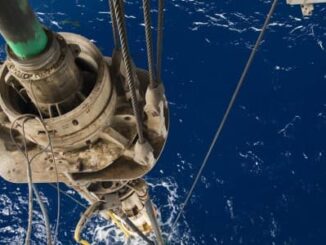
The African Energy Chamber (AEC) has released its highly anticipated State of African Energy 2026 Outlook, painting a picture of steady growth and untapped potential in Africa’s onshore oil and gas sector.
According to the report, onshore hydrocarbon spending across the continent is projected to reach $22 billion in 2026, driven by optimization at mature fields and promising exploration campaigns in key markets.
This forecast signals a cautious resurgence in upstream activities, with onshore production taking a larger share of Africa’s hydrocarbon output compared to offshore, particularly in established powerhouses like Algeria, Libya, and Nigeria.
As global energy demands evolve, Africa’s onshore plays are attracting a mix of international majors, independents, and indigenous operators, offering investors opportunities in cost-effective, job-creating projects that bolster energy security and economic development.
Steady Production Amid Exploration Momentum
The outlook emphasizes that Africa’s onshore production will remain stable in 2026, thanks to the efficient management of existing assets.
However, the real excitement lies in ongoing and upcoming exploration efforts, which could reshape the continent’s energy landscape. NJ Ayuk, Executive Chairman of the AEC, noted, “The emergence of new onshore players signals a promising future for Africa’s onshore landscape. While the majority of IOC investments have shifted offshore, the rise of indigenous players will see onshore production remaining steady – if not increasing – in the coming years.”
NJ Ayuk was on the Energy News Beat podcast: Empowering Africa: Navigating Energy Independence and Economic Growth
Key countries highlighted include:Algeria: Production is expected to hold at 3 million barrels of oil equivalent per day (boe/d) over the next five years, with 2026 targets of 1 million barrels per day (bpd) in oil and 10 billion cubic meters (bcm) per day in gas.
The government aims for 200 bcm annually, half for exports. Projects like Tin Fouye Tabankort Sud and In Amenas II are set to kick off in 2026.
Libya: With 93% of its output onshore, the country targets 2 million bpd soon.
A 2025-2026 licensing round for 22 blocks, including up to 11 onshore, has drawn over 40 bidders, focusing on brownfield redevelopments like Sarir and Mesla.
Nigeria: Onshore output has risen due to better security and local operators, with goals of 2.1 million bpd by end-2025 and 3 million bpd by 2030.
Notable developments include the Ubeta gas project and ANOH.
Emerging frontiers like Zimbabwe, Angola, and Namibia are also spotlighted, with potential for major discoveries.
Other nations such as Gabon, South Sudan, Mozambique, Uganda, and Equatorial Guinea are recognizing onshore opportunities.
Key Oil and Gas Companies Leading Exploration
A diverse array of companies is driving onshore exploration in Africa, blending established majors with agile independents and indigenous firms.
Here’s a breakdown of prominent players based on recent developments:
Invictus Energy (Zimbabwe): Advancing the Cabora Bassa Project after 2023-2024 discoveries, with the Musuma-1 well planned for H2 2025, targeting up to 1.2 trillion cubic feet of gas.
Corcel (Angola): Leading the first pre-salt exploration well in the onshore Kwanza basin in nearly 40 years, with seismic data acquisition underway and drilling slated for 2026.
ReconAfrica (Namibia): Progressing drilling in the Damara Fold Belt, including wells at Naingopo and Kavango West 1X, backed by a 3D seismic program in H2 2025.
TotalEnergies (Nigeria): Developing the Ubeta onshore gas project, though the company recently divested some Nigerian onshore assets to Chappal Energies, signaling a strategic shift.
Seplat and Renaissance Africa Energy Company (RAEC) (Nigeria): Leading the ANOH development; RAEC took over Shell’s onshore assets (SPDC) in mid-March 2025, boosting indigenous control.
Chappal Energies (Nigeria): Acquired TotalEnergies’ onshore assets, positioning it as a key indigenous player in mature fields.
ExxonMobil and Chevron (Algeria): Nearing deals to develop vast gas reserves, including shale for the first time, leveraging modern technologies like fracking.
Etu Energias (Angola): Focusing on onshore exploration alongside offshore, aiming for 80,000 bpd production.
Tullow Oil: An Africa-focused explorer in talks for refinancing, with ongoing operations across the continent.
These companies are capitalizing on Africa’s onshore potential, where costs are lower and infrastructure investments yield quick returns.
The rise of indigenous operators, particularly in Nigeria, is a notable trend, as international oil companies (IOCs) pivot offshore.
What Investors Should Look For
For investors eyeing Africa’s onshore oil and gas sector, the AEC outlook underscores several strategic opportunities and considerations.
Onshore exploration is cost-effective, creates jobs through infrastructure, provides affordable energy for local industries, and generates government revenues—key factors for sustainable returns.
Ayuk advises embracing technologies like fracking to boost production and enhance energy security without hesitation.
Key Investor Focal Points:Emerging Frontiers: Prioritize companies active in high-potential areas like Zimbabwe’s Cabora Bassa, Angola’s Kwanza basin, and Namibia’s Damara Fold Belt, where discoveries could yield massive reserves.
Indigenous and Independent Players: Look for firms like Chappal Energies, RAEC, and Etu Energias, which benefit from local knowledge, improved security, and government incentives.
These operators are driving growth in mature markets like Nigeria.
Majors with Tech Edge: Companies like ExxonMobil and Chevron in Algeria offer stability through partnerships and advanced tech for shale and gas development.
Licensing and Partnerships: Monitor Libya’s 2025-2026 bid round and events like African Energy Week (October 12-16, 2026) for deal-making.
Risk Management: Assess political stability, security improvements (e.g., in Nigeria), and alignment with energy transition goals. Domestic gas development can mitigate global pressures by powering local economies and enabling regional trade.
Overall, the sector’s resurgence—fueled by seismic advancements and faster permitting—positions Africa for an exploration boom.
Investors should seek diversified portfolios balancing mature assets with frontier upside for long-term gains.
For the full State of African Energy 2026 Outlook, download it from the AEC website.
As Africa harnesses its onshore resources, the stage is set for transformative economic impacts. This is an excellent report and shows what we have all known for a long time, and that is, good energy investments help elevate humanity out of poverty.






Be the first to comment